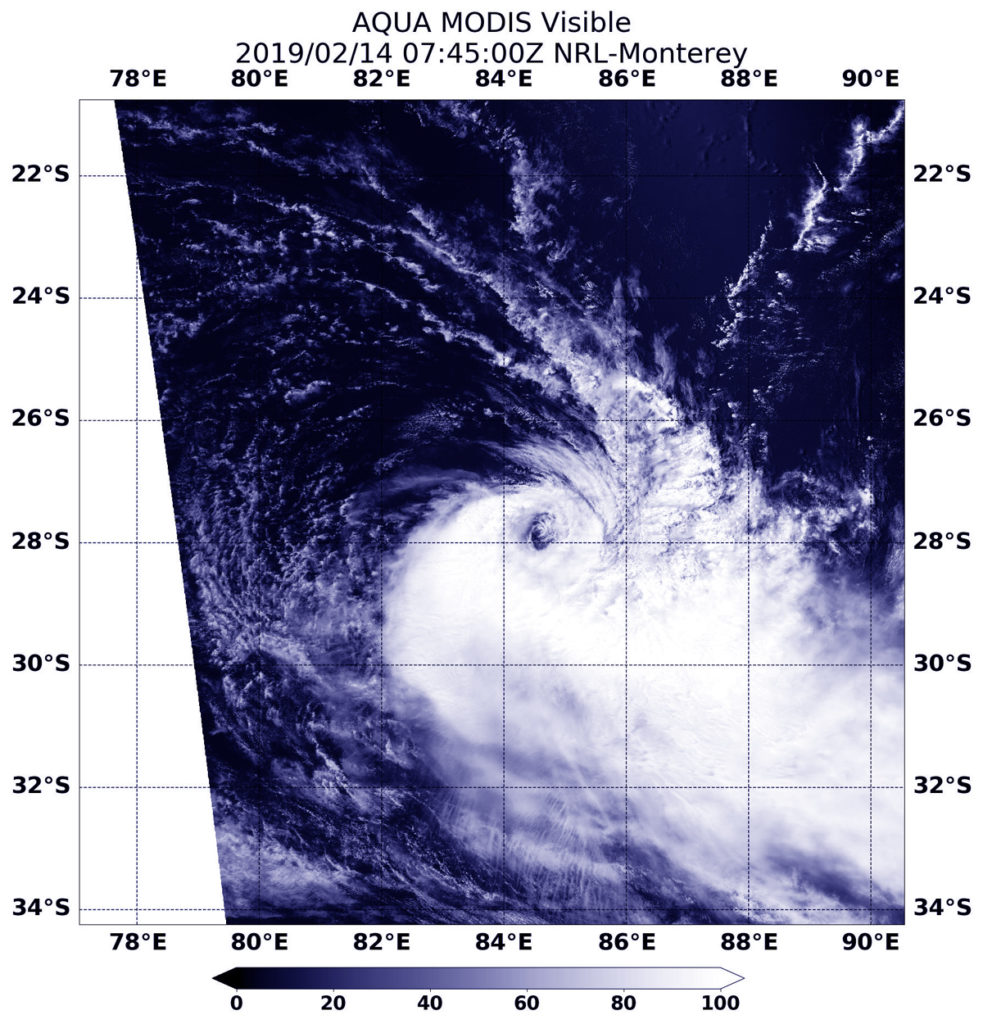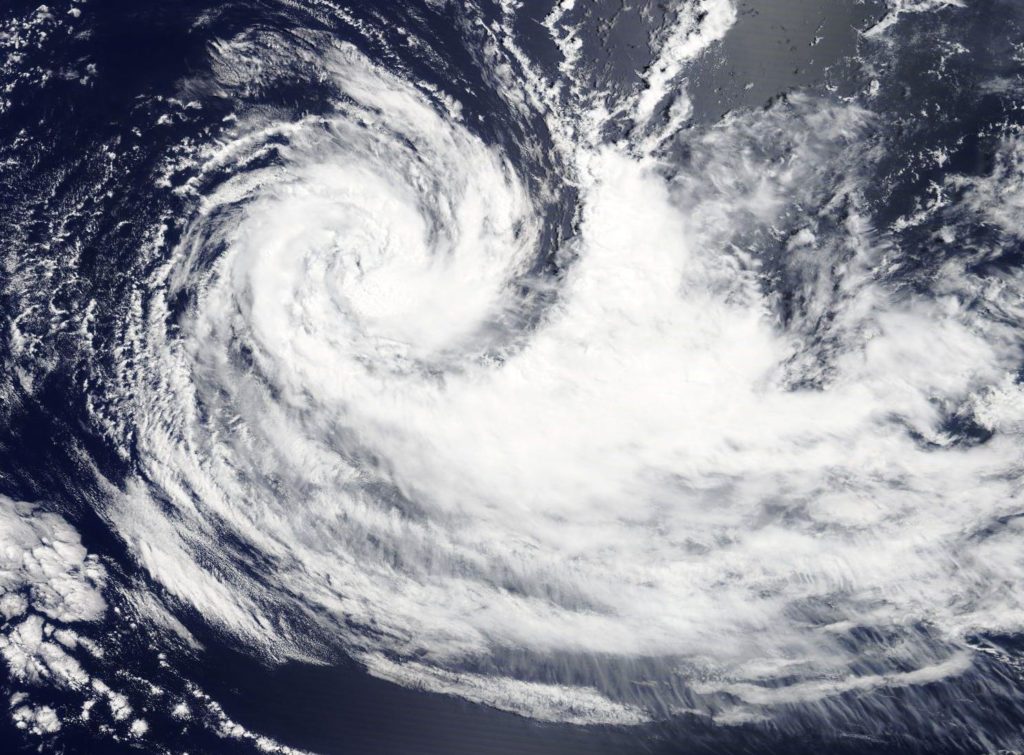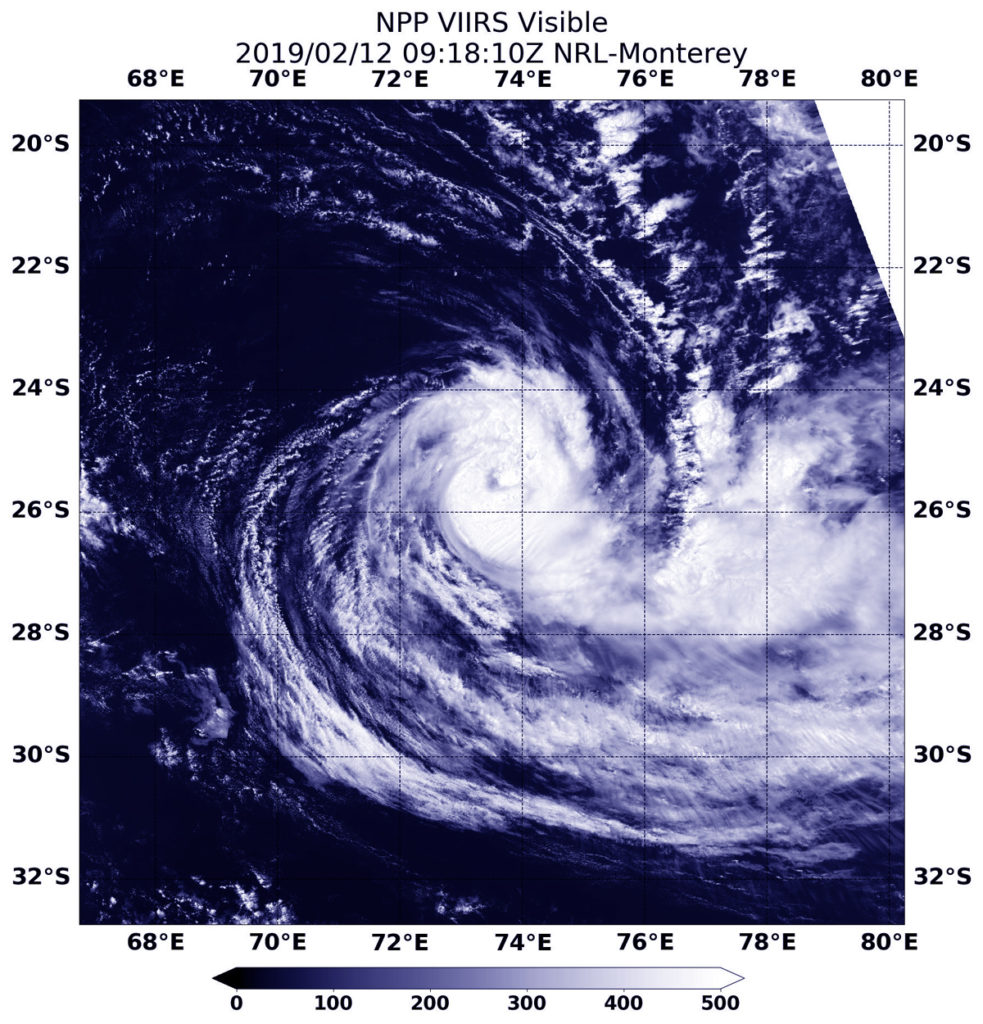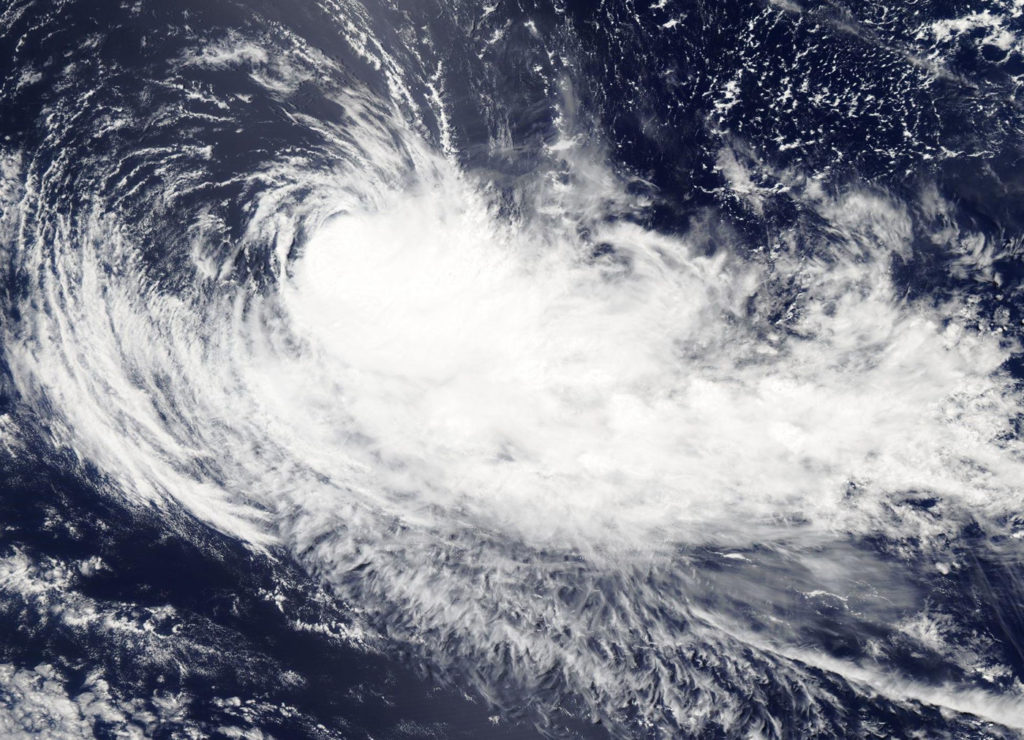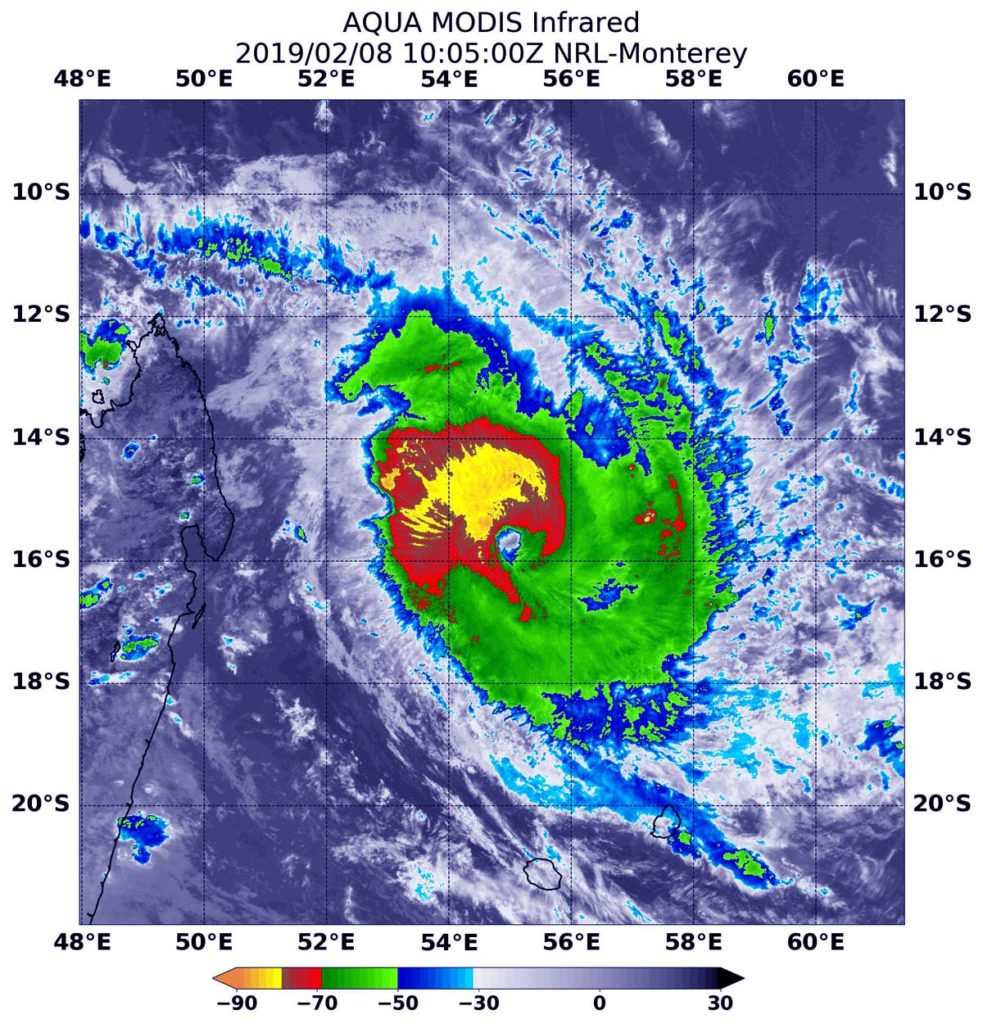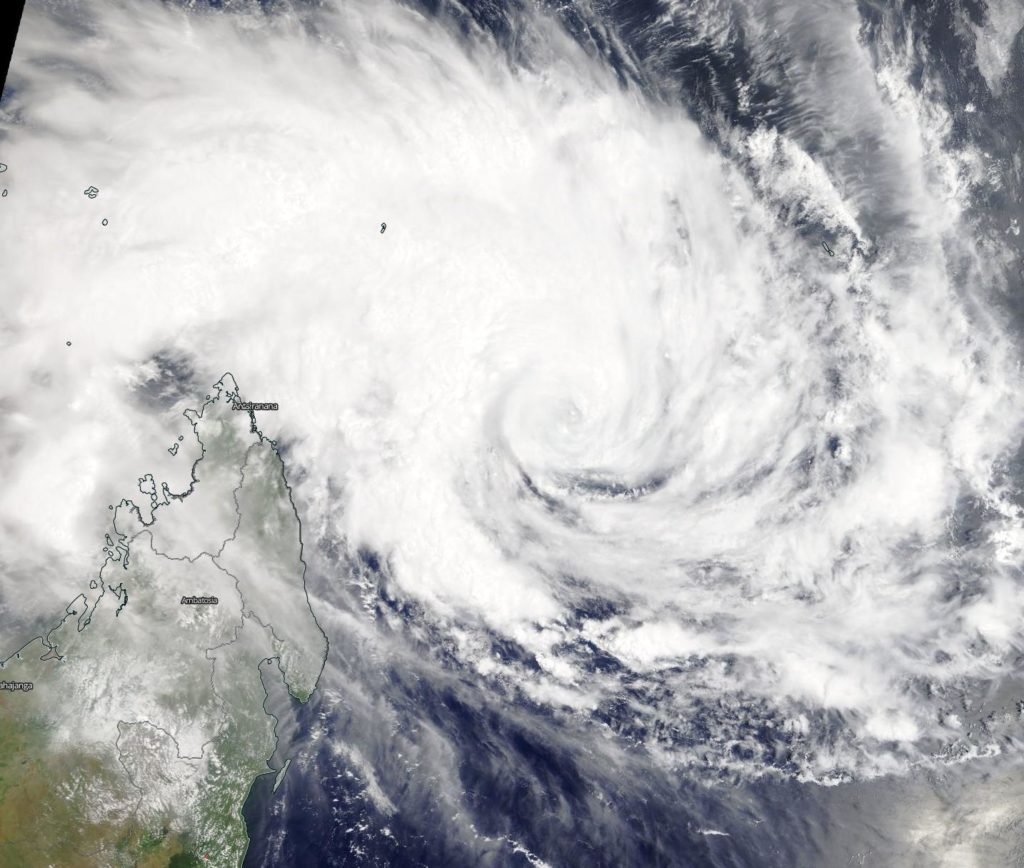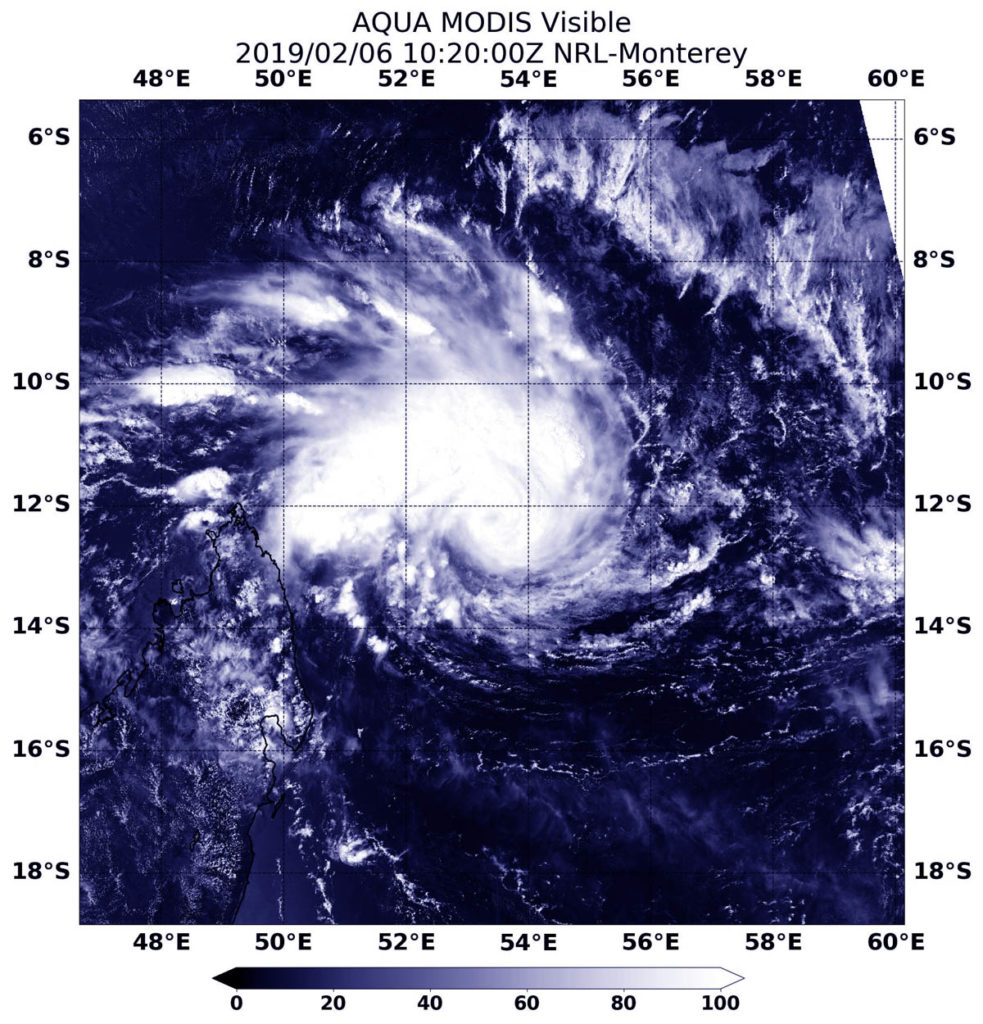Feb. 15, 2019 – NASA Catches Tropical Cyclone Gelena’s Post-Tropical Transition
Tropical cyclones can become post-tropical before they dissipate, meaning they can become sub-tropical, extra-tropical or a remnant low pressure area. As Tropical Cyclone Gelena transitioned into a subtropical storm, NASA’s Aqua satellite provided a visible image of the storm.
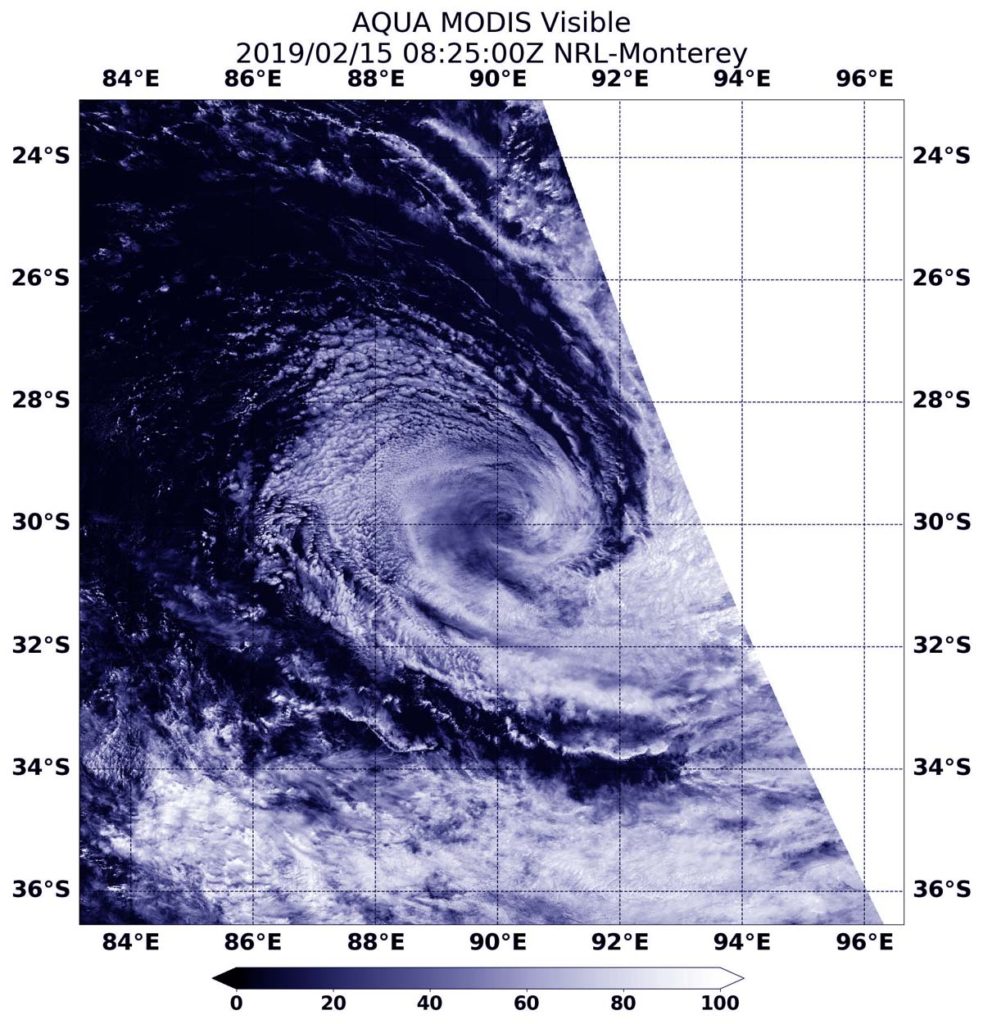
On Feb 15 at 10 p.m. EDT (Feb. 16 at 0300 UTC), the Joint Typhoon Warning Center or JTWC noted that Gelena had already become subtropical. JTWC issued their final warning on Gelena. At that time, the storm had maximum sustained winds near 40 knots (46 mph/74 kph). It was centered near 29.8 degrees south latitude and 89.3 degrees east longitude. That’s 1,426 nautical miles east-southeast of Learmonth, Australia. Gelena was moving east-southeast.
What is a Post-tropical Storm?
A Post-Tropical Storm is a generic term for a former tropical cyclone that no longer possesses sufficient tropical characteristics to be considered a tropical cyclone. Former tropical cyclones that have become fully extratropical, subtropical, or remnant lows, are three classes of post-tropical cyclones. In any case, they no longer possesses sufficient tropical characteristics to be considered a tropical cyclone. However, post-tropical cyclones can continue carrying heavy rains and high winds.
What is a Sub-tropical Storm?
According to the National Oceanic and Atmospheric Administration, a sub-tropical storm is a low-pressure system that is not associated with a frontal system and has characteristics of both tropical and extratropical cyclones. Like tropical cyclones, they are non-frontal that originate over tropical or subtropical waters, and have a closed surface wind circulation about a well-defined center.
Unlike tropical cyclones, subtropical cyclones derive a significant proportion of their energy from baroclinic sources (atmospheric pressure), and are generally cold-core in the upper troposphere, often being associated with an upper-level low pressure area or an elongated area or trough of low pressure.
In comparison to tropical cyclones, these systems generally have a radius of maximum winds occurring relatively far from the center (usually greater than 60 nautical miles), and are generally less symmetric.
What is an Extra-tropical Storm?
Often, a tropical cyclone will transform into an extra-tropical cyclone as it recurves toward the poles (north or south, depending on the hemisphere the storm is located in). An extra-tropical cyclone is a storm system that primarily gets its energy from the horizontal temperature contrasts that exist in the atmosphere.
Tropical cyclones have their strongest winds near the earth’s surface, while extra-tropical cyclones have their strongest winds near the tropopause – about 8 miles (12 km) up. Tropical cyclones, in contrast, typically have little to no temperature differences across the storm at the surface and their winds are derived from the release of energy due to cloud/rain formation from the warm moist air of the tropics.
Visible NASA Imagery Shows the Transition
Visible imagery from NASA’s Aqua satellite revealed Gelena’s subtropical transition.
At 3:25 a.m. EDT (0825 UTC) on Feb. 15, 2019, the Moderate Resolution Imaging Spectroradiometer or MODIS instrument aboard NASA’s Aqua satellite provided a visible image of subtropical storm Gelena in the Southern Indian Ocean. The MODIS image showed Gelena had a closed surface wind circulation about a well-defined center, but the storm has become asymmetric (as subtropical storms do).
The Joint Typhoon Warning Center noted “animated multispectral satellite imagery shows cloud tops continuing to warm and convective structure continuing to unravel. [Another satellite] image showed remnant convective bands [of thunderstorms] sheared (pushed by winds) to the south and wrapping into an elongated partially exposed low level circulation center.”
Gelena is expected to continue moving through the Southern Indian Ocean over the next day until it dissipates.

